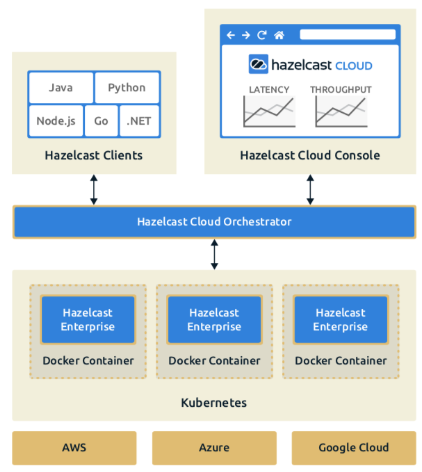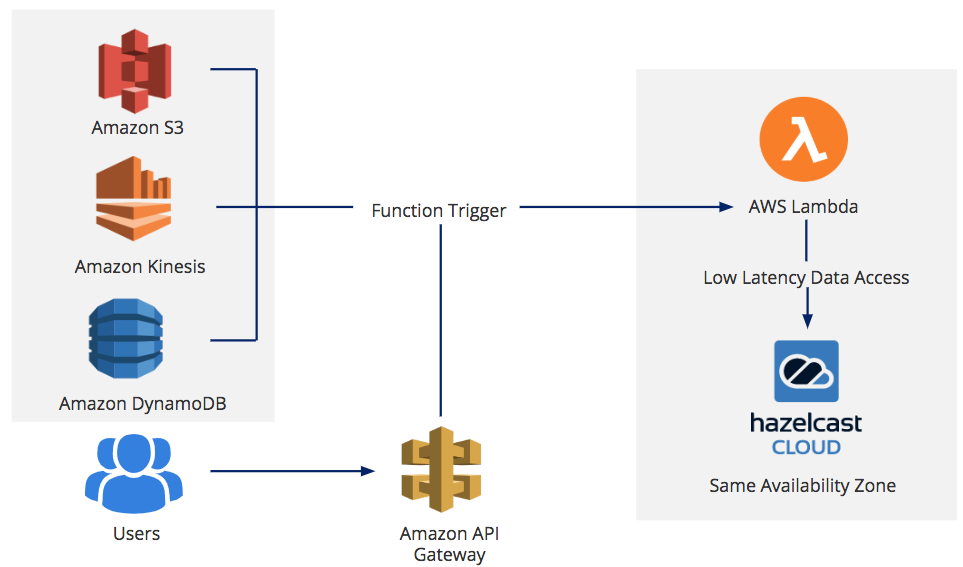Announcing Hazelcast Cloud GA
Today, we are announcing the general availability of Hazelcast Cloud, our new managed service.

I remember the day about 9-years-ago when I created my first cluster in Hazelcast and how impressed I was by the ease of the process and the limited need for configuration. A year later, I joined the company as a developer, with the goal of helping Hazelcast make developers lives easier. So now I am happy to announce one more step on that path, Hazelcast Cloud, a fully managed in-memory service. With Hazelcast Cloud, you can focus on your passion, development. You will no longer need to deal with servers, instances or other infrastructure. You can develop your application while we maintain Hazelcast for you.
What Is Hazelcast Cloud?
Hazelcast Cloud is a combination of three powerful technologies: Hazelcast IMDG, Kubernetes and Docker. Hazelcast IMDG provides users a low-latency, high throughput distributed data and caching layer, whereas Kubernetes provides dynamic orchestration and Docker provides containerization. Hazelcast brings these solutions together to transparently provide a serverless Hazelcast IMDG service for your cloud-native applications.

Hazelcast Cloud uses Hazelcast IMDG Enterprise HD, our high-end enterprise version. Hazelcast IMDG open source, the most widely adopted operational in-memory computing platform, sits at the core of the IMDG, but the Enterprise version includes essential enterprise features, such as security suite, rolling upgrades, data persistence, and recoverability, things which are not provided in competitive products from cloud vendors.
What Makes Hazelcast Cloud Unique?
From day one, Hazelcast Cloud’s design encompasses the philosophy of serverless computing. Using Hazelcast Cloud, you don’t need to know anything about servers, instances or any other operational details, you only configure your cluster and start using it. The Hazelcast team manages all the tedious operational tasks so that you can focus on your own business.
All public clouds provide simple caching, typically using service wrapped and limited versions of other projects. Hazelcast Cloud is the first in-memory data grid generally available in the public cloud that provides customers with sophisticated, enterprise-grade features. While caching is one use for in-memory data grids, grids are also available as a generally distributed toolkit with 5 or 6 commonly used APIs. Some popular ones include iMap, MultiMap, EntryProcessor, Query and Lock, all of which are available in Hazelcast Cloud.
What are the Use Cases?
First of all, Hazelcast Cloud can be data layer for cloud-based applications and microservices: If your application is composed of microservices deployed in the cloud, then Hazelcast can supercharge the performance with its low latency, memory-based approach. You can share the data among your microservices using Hazelcast Cloud by creating a client and accessing the shared data.

Moreover, you can use Hazelcast Cloud as a caching layer for your cloud-based applications and microservices. You may have an application or microservice that reads and writes shared data to a database. However, the database can create a bottleneck for your system if the data needs to be accessed with low-latency or with a high load. For both cases, introducing Hazelcast Cloud as an in-memory cache is a great solution.
Another use case for Hazelcast Cloud is as a data layer and state management for your serverless functions. If you have AWS Lambda functions, what do you do when you need to read/write a state inside the function? Alternatively, what is your solution when multiple functions need to communicate with each other? Accessing the database is not the best idea as each microsecond is vital for the cost efficiency of your Lambda function. Again, the low latency, memory-based nature of Hazelcast Cloud is a perfect solution.

If you want full control over your Hazelcast clusters, then it may be better to set up and deploy a Hazelcast cluster yourself using integration modules like AWS and K8s plugins. However, if you want to leave deployment and operations to the Hazelcast team, then Hazelcast Cloud is a better fit.
What’s Next?
Hazelcast Cloud is the first step. Although we believe it has already a high potential to be useful in many use cases, we have more work to do. Some of these include:
- Greater breadth: we started with AWS with 3 regions, Oregon, North Virginia and Ireland. In addition to increasing the number of regions, we will also expand to other cloud platforms, including Microsoft Azure and Google Cloud Platform (GCP), are on the roadmap.
- Higher availability options: since the managed service utilizes Hazelcast Enterprise HD, this creates many rich options for Hazelcast Cloud users. Soon, we will introduce higher availability options like zone replication and WAN replication across regions.
- Hazelcast Cloud Dedicated: Hazelcast Cloud running on customer dedicated infrastructure.
Our community has a very significant role in the success of Hazelcast. Once again, we need your help to make it better. Give Hazelcast Cloud a try and share all of your feedback with us.
To get started, follow this Getting Started Guide and sign up!

